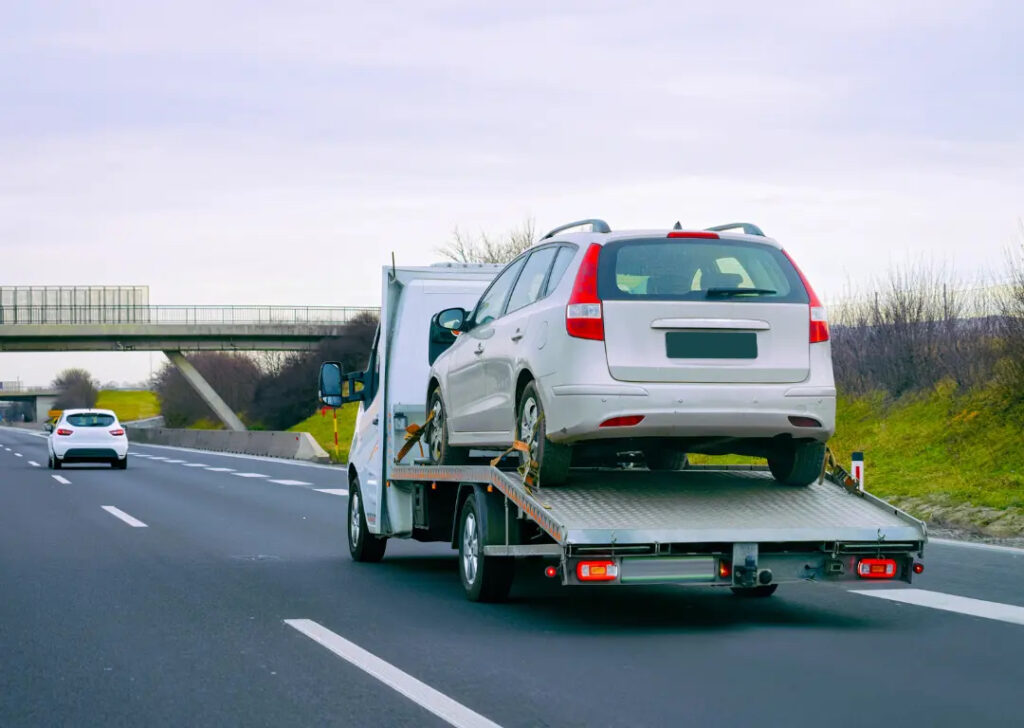Top Tips for Preparing Your Vehicle for Open Carrier Shipping

Preparing your vehicle for open carrier shipping service is essential to ensure it arrives at its destination safely and in excellent condition. Whether you’re moving across the country or transporting a vehicle you’ve sold, following these tips will help minimize risks and protect your vehicle throughout the shipping process.
Clean Your Vehicle Thoroughly
Before your vehicle is loaded onto the open carrier, give it a thorough wash and clean both inside and out. Removing dirt, dust, and debris not only presents your vehicle well but also makes it easier to inspect for any pre-existing damages. Take note of any scratches, dents, or other imperfections before shipping.
Document Pre-Existing Damage
Documenting your vehicle’s condition before shipping is crucial for insurance purposes. Take clear photos of all sides of the vehicle, including close-ups of any existing scratches, dents, or paint chips. This documentation provides a clear record of the vehicle’s condition prior to shipping and can help resolve any disputes regarding damage that may occur during transport.
Remove Personal Belongings
While open carrier shipping is generally safe, it’s essential to remove all personal belongings from your vehicle before shipping. The shipping company typically requires this for safety and insurance reasons. Additionally, removing personal items reduces the risk of theft and ensures that the vehicle’s weight remains within the carrier’s allowable limits.
Check Fluid Levels
Ensure that all fluid levels in your vehicle are topped up to the manufacturer’s recommendations. This includes engine oil, coolant, brake fluid, and transmission fluid. Proper fluid levels help protect your vehicle’s engine and components during transport, especially if the journey involves varying temperatures or climates.
Inspect and Inflate Tires
Inspect your vehicle’s tires for any signs of wear or damage. Ensure they are inflated to the recommended pressure levels specified in your vehicle’s owner manual. Properly inflated tires not only protect your vehicle’s suspension but also prevent flat spots from forming during extended periods of transport.
Secure Loose Parts and Accessories
If your vehicle has any loose parts or accessories that could be easily damaged or lost during transport, such as spoilers, antennas, or aftermarket modifications, consider removing them or securing them properly. Items like spoilers should be securely fastened or removed altogether to prevent damage from wind resistance during transport.
Disable Alarms and Prepare Keys
Disable any aftermarket alarms or security systems in your vehicle to avoid unnecessary disruptions during transport. Provide a set of keys to the shipping company, including any necessary spares or copies, but keep a spare set for yourself. Ensure the keys are easily accessible and securely attached to avoid misplacement.
Consider Additional Protection
While open carrier shipping is generally safe and cost-effective, you may consider additional protection options for peace of mind. Some companies offer supplementary insurance coverage or enhanced security measures for high-value vehicles or specific transport needs. Discuss these options with your shipping provider to determine what best suits your requirements.
Review and Confirm Shipping Details
Before your vehicle is loaded onto the open carrier, review all shipping details and documentation provided by the shipping company. Ensure that the pickup and delivery locations, dates, and times are accurate and confirm any special instructions or requirements for the transport process. Clear communication and understanding of logistics help prevent misunderstandings and ensure a smooth shipping experience.
Obtain Contact Information
Obtain contact information for the shipping company’s representative or driver responsible for transporting your vehicle. Having direct communication with the driver allows you to stay informed about the progress of your shipment and address any questions or concerns that may arise during transport.
Monitor Your Vehicle Upon Arrival
Upon your vehicle’s arrival at the destination, carefully inspect it for any signs of damage or discrepancies compared to your pre-shipping documentation. Use the photos and notes you took before shipping as a reference. If you notice any new damage or issues, document them immediately and notify the shipping company to initiate a claim process if necessary.
Conclusion
Preparing your vehicle for open carrier shipping involves taking proactive steps to ensure its safety and protection throughout the transport process. By following these top tips, you can minimize risks, maintain your vehicle’s condition, and enhance your overall shipping experience. Remember to communicate effectively with your shipping provider, stay organized with documentation, and prioritize thorough inspection upon delivery to ensure a smooth and successful vehicle transport experience.

 How to Find the Best Tutor in Los Angeles?
How to Find the Best Tutor in Los Angeles?  How You Get into the Canada’s Largest Engineering School
How You Get into the Canada’s Largest Engineering School  Explore the Top 10 Reasons Why to Study in the abroad!
Explore the Top 10 Reasons Why to Study in the abroad!  The Best Time to Book a Short Stay Apartment in Dubai
The Best Time to Book a Short Stay Apartment in Dubai  Maximize Your Potential With A CDL Truck Driving School
Maximize Your Potential With A CDL Truck Driving School  How students can book accommodation in York House Nottingham?
How students can book accommodation in York House Nottingham?  Exploring London’s Best Butcher Shops
Exploring London’s Best Butcher Shops  Enhance Your Shop Appeal with Sydney’s Best Carpentry Services
Enhance Your Shop Appeal with Sydney’s Best Carpentry Services  A Detailed Look at the Features of the LEGO Technic Mars Crew Exploration Rover
A Detailed Look at the Features of the LEGO Technic Mars Crew Exploration Rover